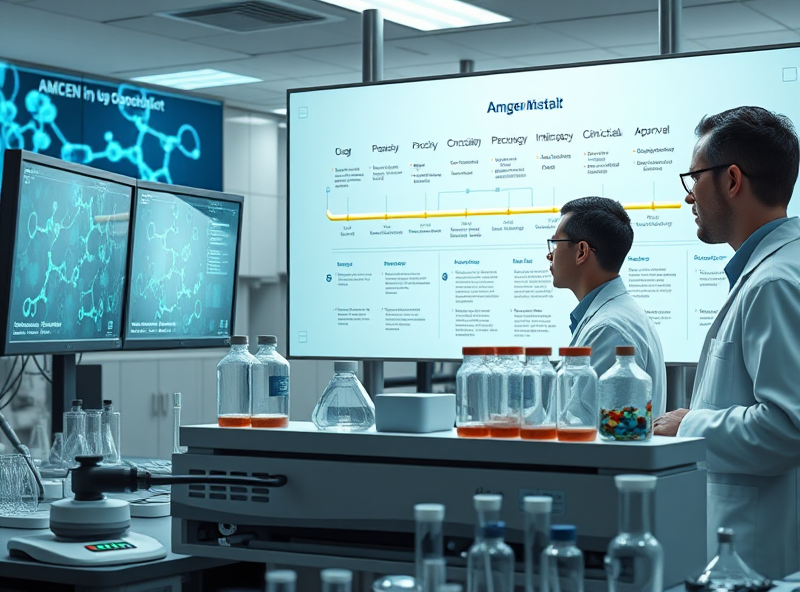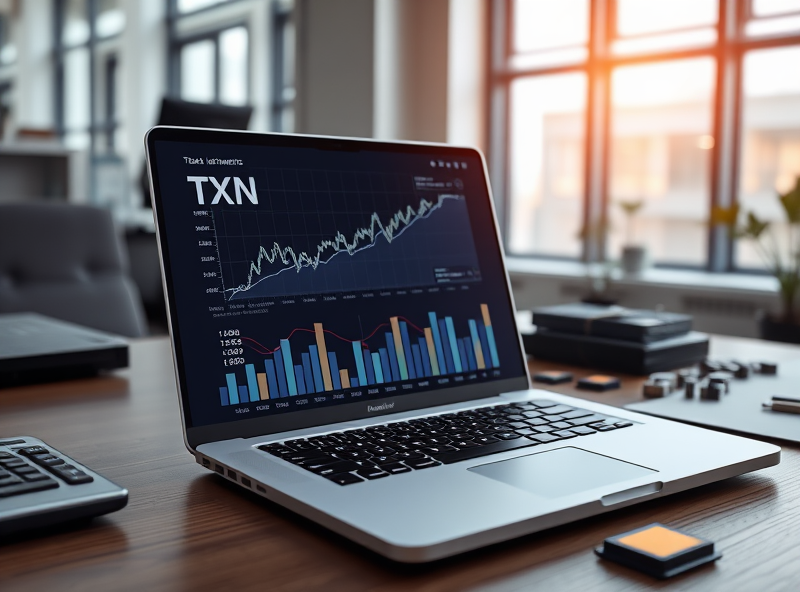
Amgen’s Biotech Pipeline & Market Position: 2025 Outlook
Exploring Amgen’s Leading Drug Pipeline in 2025

Amgen, one of the world’s foremost biotechnology companies, is entering 2025 with a robust and diverse drug pipeline that reflects its strategic focus on innovation in serious illness treatment. This year, Amgen is concentrating on several therapeutic areas, including oncology, inflammation, and cardiovascular diseases—fields with high unmet medical needs.
Among its most promising candidates is AMG 133, a first-in-class GLP-1/glucagon receptor dual agonist for obesity. With obesity being a global health crisis, this drug could offer a significant alternative to existing therapies, potentially transforming weight management for millions. Another standout is tarlatamab, a bispecific T-cell engager (BiTE) therapy targeting small cell lung cancer, which has shown encouraging results in early trials.
In inflammation, Amgen is advancing TEZSPIRE (tezepelumab), a monoclonal antibody for severe asthma, in new indications such as chronic rhinosinusitis with nasal polyps. This expansion could help patients who suffer from multiple inflammatory conditions.
Amgen’s pipeline is also bolstered by its recent acquisition of Horizon Therapeutics, which adds rare disease treatments like TEPEZZA and UPLIZNA to its portfolio. These additions not only diversify Amgen’s offerings but also strengthen its position in immunology and rare diseases.
With a strong focus on biologics and biosimilars, Amgen is well-positioned to maintain its competitive edge in the biotech sector. The company’s strategic investments in R&D and its commitment to personalized medicine underscore its long-term vision to deliver transformative therapies.
For more detailed information on Amgen’s pipeline, you can visit their official pipeline overview: https://www.amgen.com/science/pipeline
Strategic Collaborations and Acquisitions Fueling Innovation

In 2025, Amgen continues to strengthen its biotech pipeline through a strategic blend of collaborations and acquisitions, reinforcing its position as a global biopharmaceutical leader. These partnerships are not just business moves—they are critical pathways to accelerating drug discovery, accessing novel technologies, and expanding therapeutic reach.
One of the most impactful collaborations in recent years has been Amgen’s partnership with Generate Biomedicines, which leverages machine learning to design protein therapeutics. This alliance exemplifies how Amgen is integrating AI-driven platforms to innovate faster and more precisely in biologics development.
In addition, Amgen’s acquisition of Horizon Therapeutics in 2023 significantly expanded its rare disease portfolio. This move not only brought in promising assets like Tepezza and Krystexxa but also allowed Amgen to tap into Horizon’s deep expertise in immunology and inflammation—key areas of growth in Amgen’s 2025 strategy.
Strategic alliances with companies like BeiGene in oncology and Arrakis Therapeutics in RNA-targeted drug discovery further demonstrate Amgen’s commitment to diversifying its pipeline. These collaborations help Amgen access cutting-edge science while sharing development risks and costs.
For investors, healthcare professionals, and patients alike, Amgen’s approach to innovation through collaboration means faster access to next-generation therapies and a more resilient biotech ecosystem. Staying informed about these strategic moves offers valuable insight into where the future of medicine is headed.
For more details on Amgen’s recent acquisitions and pipeline strategy, you can refer to their official investor relations page: https://investors.amgen.com
Exploring Amgen’s Leading Drug Pipeline in 2025

As we look ahead to 2025, Amgen continues to solidify its position as a global biotechnology leader by focusing on innovation-driven therapies and a robust drug pipeline. With a strategic emphasis on serious illnesses such as oncology, inflammation, and rare diseases, Amgen is leveraging its deep scientific expertise and advanced biologics capabilities to deliver life-changing treatments.
One of the key strengths of Amgen’s market presence lies in its diversified pipeline. In oncology, for instance, the company is advancing molecules like tarlatamab, a bispecific T-cell engager (BiTE) for small cell lung cancer, which has shown promising results in early trials. Meanwhile, in inflammation, Amgen is expanding the reach of its blockbuster drug Otezla, and investing in novel therapies targeting autoimmune conditions.
Amgen is also investing heavily in biosimilars, which are expected to play a crucial role in expanding patient access to essential biologic medicines while reducing healthcare costs. This strategy not only supports global health equity but also strengthens Amgen’s commercial footprint in competitive markets.
Furthermore, Amgen’s use of AI and machine learning in drug discovery and development is helping accelerate timelines and improve the precision of clinical trials. This technological edge enhances their ability to bring new therapies to market faster and more efficiently.
With a balanced portfolio of early- and late-stage candidates, Amgen is well-positioned to maintain its leadership in biotech innovation. For investors, healthcare professionals, and patients alike, keeping an eye on Amgen’s evolving pipeline offers valuable insights into the future of medicine.
For more detailed information, you can refer to Amgen’s official pipeline overview: https://www.amgen.com/science/pipeline
Navigating Risks: Pipeline Challenges & Biosimilar Pressures

As Amgen moves into 2025, the biotech giant faces a dual challenge: advancing its innovative drug pipeline while defending its market share against intensifying biosimilar competition. Understanding these dynamics is crucial for investors, healthcare professionals, and patients alike.
Amgen’s pipeline is rich with promise, especially in oncology, inflammation, and rare diseases. However, the path from clinical trials to regulatory approval is fraught with uncertainty. Late-stage failures can result in significant financial losses and strategic setbacks. For example, even promising Phase 2 results don’t guarantee success in Phase 3, where larger patient populations and longer trial durations can reveal unforeseen safety or efficacy issues.
In parallel, Amgen is experiencing mounting pressure from biosimilars, particularly in its legacy products like Neulasta and Enbrel. Biosimilars—essentially generic versions of biologic drugs—are eroding revenue streams by offering similar therapeutic benefits at lower costs. This trend is accelerating globally as more countries adopt biosimilar-friendly regulations.
To navigate these risks, Amgen is diversifying its pipeline with first-in-class and best-in-class therapies, investing in platform technologies like bispecific T-cell engagers (BiTEs), and expanding into new therapeutic areas. Strategic partnerships and acquisitions also play a key role in mitigating pipeline risk and maintaining competitive advantage.
For stakeholders, staying informed about Amgen’s clinical trial progress and regulatory milestones is essential. The FDA’s drug approval database and Amgen’s investor relations updates are reliable sources for this information.
Reference: U.S. Food and Drug Administration – Drug Approvals and Databases (https://www.fda.gov/drugs/drug-approvals-and-databases)







